It’s one of the American SouthWest’s blue-ribbon draws, hauling in millions of visitors annually: Zion National Park, a place of monumental reverence. The sort of place that won’t quite fit inside your camera, no matter how hard you try to capture the sweeping, vaulting sense of magnificence. Some aspects of the park resemble a hand-tinted Yosemite, with drop dead gorgeous vertical cliff faces, rendered in sandstone.
Zion’s sandstone cliffs are some of the tallest in the world and the rock faces are fawned over by big wall rock climbers. Many of the rock climbers will sleep overnight halfway up a rock face, in a bid to conquer the climb. Zion is one of the beloved features of the mighty Colorado Plateau, a rarefied place where you’re best to just look up, tilt your head and let your eyes trace the soaring landscape.
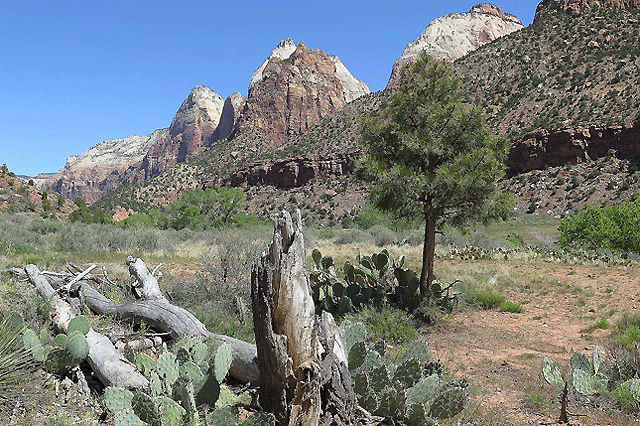
This wonderland of geologic time, bathed in a mosaic of colour, is characterised by red and white sandstone monoliths, rock towers and mesas. In addition to Zion Canyon, which is still carved and sculpted by the Virgin River, there’s a honeycomb of deep and narrow slot canyons. The Virgin River was barely tinkling, on my visit. But it can swiftly and dramatically turn into a raging gusher, given the area’s propensity for flash floods following summer monsoon downpours.
I entered the park from its eastern approach, on the famed Zion-Mount Carmel Highway, punctuated by a one-mile long tunnel, blasted out of solid sandstone. The three year guts and glory project was finally completed in 1930, and hailed across America as an engineering miracle. 800 feet high, a sequence of open air “galleries” were built into the side of the tunnel, which early sightseers would stop at, to gasp at the elevated alpine vista across the national park.
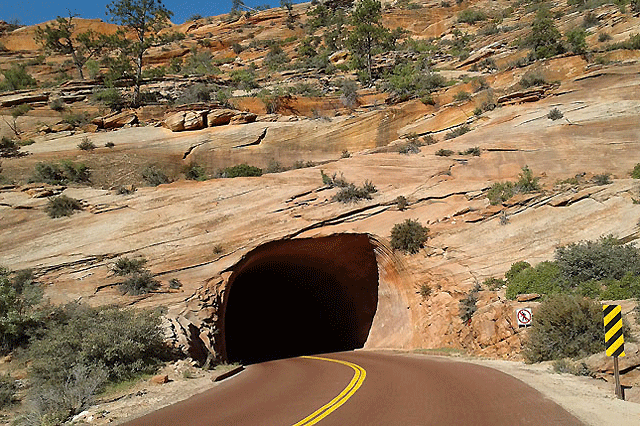
That’s no longer allowed. Just pass the tunnel, and before the engrossing sequence of switch-backs descending into Zion Canyon, I stopped at the trailhead to the Canyon Overlook, which as the name suggests, offers up one of the prized panoramas of the national park. The trail starts by wending through the twisted slot of Pine Creek Canyon before opening out into an expansive lookout perch.
The walk is a one-hour round journey, but worth every step. Driving into the national park, I was suddenly confronted by Checkerboard Mesa, a stirring specimen of naturally sculpted rock art – and so aptly named. I soon learnt that the checkerboard design of this Navajo sandstone dome indicates that ancient sand dunes created the horizontal lines and the vertical fractures have been enlarged by rain and snowmelt runoff. (Mesa is the American term for tableland.) It’s a compelling landmark.
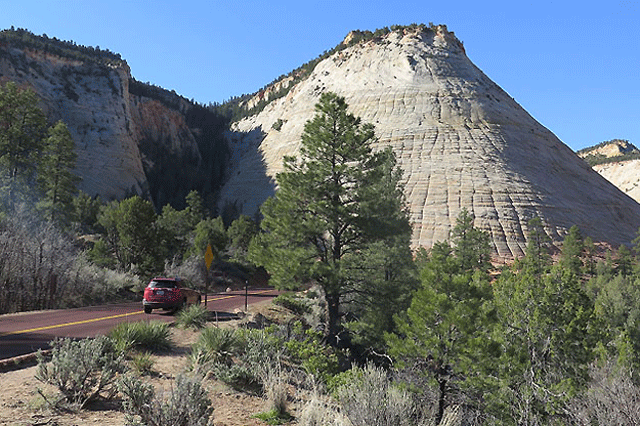
But once you enter Zion Canyon, the soul-stirring heart of the national park, you’ll feel like you’ve entered a sacred valley of the Gods. Clearly the first European settlers, Mormon scouts in search of terrain to grow cotton, thought so too, because the loftiest landmarks have all been bestowed biblical monikers, from Angel’s Landing and the Great White Throne to the Altar of Sacrifice and the Three Patriarchs. “Zion” of course was also named by the Mormon settlers, a biblical reference to a place of quiet sanctuary.
Ancient Puebloans settled here 2000 years ago and it was a Paiute Indian tribal member who led the Mormon scout, Nephi Johnson, into the canyon in 1858, which the Paiutes were farming. Before you hit the trails, head to the Zion Human History Museum for the 22-minute orientation film, a beautifully presented overview of the park’s key sights and profoundly ancient roots.
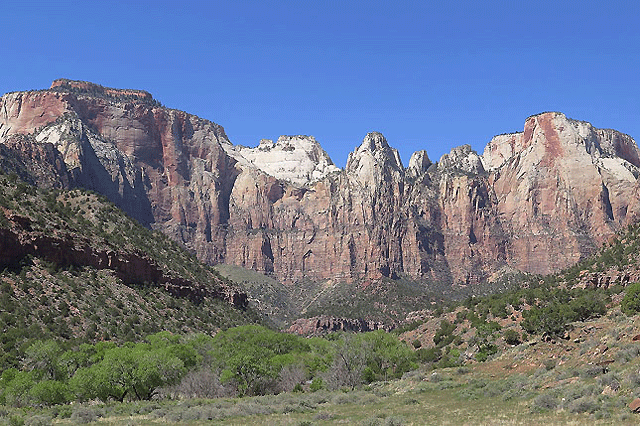
The main heart-piercing artery running through the park, Zion Canyon Scenic Drive, is off-limits to private vehicles between April and November, from Canyon Junction. Park officials wisely imposed the ban to combat the absurdity of having such a majestic piece of protected wilderness log-jammed with fume-spewing lines of cars. So instead, complimentary shuttle buses zip the throngs of visitors to all of the major trailheads and points of interest, with nine designated stops along the six mile road.
It’s a high-frequency, super-efficient service, plus you’ll glean a few factoids from the on-board narration delivered by the friendly shuttle drivers. It’s a ninety minute round-trip on the shuttle from the visitor centre through all stops. So, if you’re feeling particularly lazy, you could just sit back and soak up the park’s beauty through the windows. I was eager to hit the trails. In a bid to dodge the building crowds, I took the shuttle to the final stop on the circuit, Temple of Sinawava, which is the gateway to The Narrows.
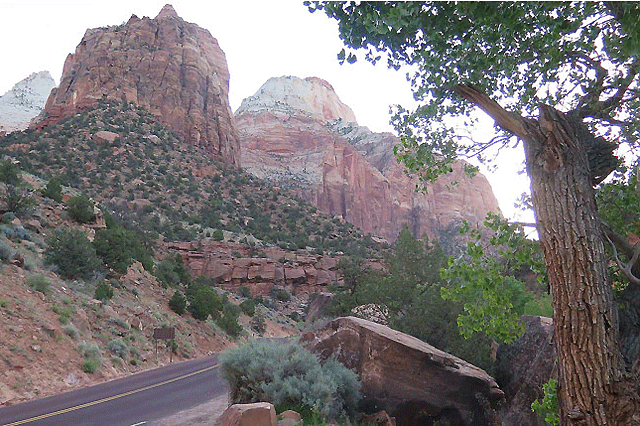
The riverside walk is a cracker, quietly drawing you into the mystery of the narrowing canyon walls. Following a storm, leaping waterfalls spritz the canyon. Along the way, playful squirrels and cheeky chipmunks scrounge for human food. Despite the bold signs urging hikers not to feed the wildlife, plenty of halfwits do. The mile long trail is smooth and meticulously paved, which actually makes it accessible to wheelchairs.
The walk culminates as the Virgin River enters The Narrows, a pencil-thin passage where the vertiginous canyon walls nearly intersect. Backdropped by soaring mountains, it’s a ravishing setting. If you’re feeling extra-intrepid, you can walk further in The Narrows, but you will be walking in the river, with the water level likely to be ankle-deep, as you wade upstream. The 2500ft-high canyon walls encroach upon the river, squeezing down to just 22 feet in breadth at the at the dramatic sections nicknamed “Wall St.”
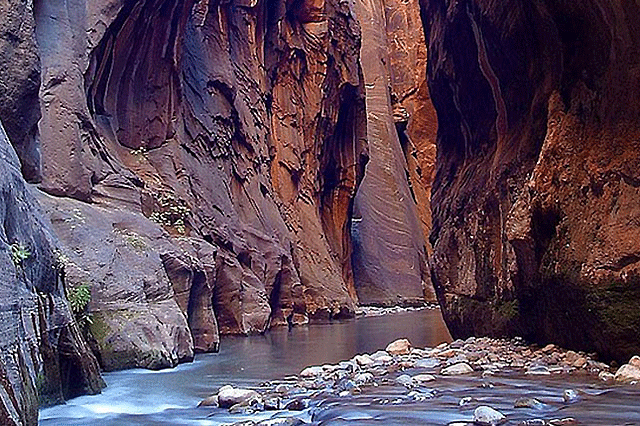
Another excellent short hike is the Weeping Rock Trail, an easy 30 minute stroll which leads you to the ravishing rock formation of an overhanging arch which “rains” every day of the year. The spring water seeping out of the rock 100 feet overhead takes nearly a 1000 years to exit through the porous Navajo sandstone.
Surrounding Weeping Rock, you’ll delight in the hanging gardens sprouting from the thin cracks and crevices of the seeping walls. Weeping Rock’s charm regularly draws hikers to sit beneath the sprinkling cascade for hours, in quiet contemplation. If you’re open to something more strenuous, Angel’s Landing is the famous, thrilling and deadly trail up to the summit of this towering fang of rock.
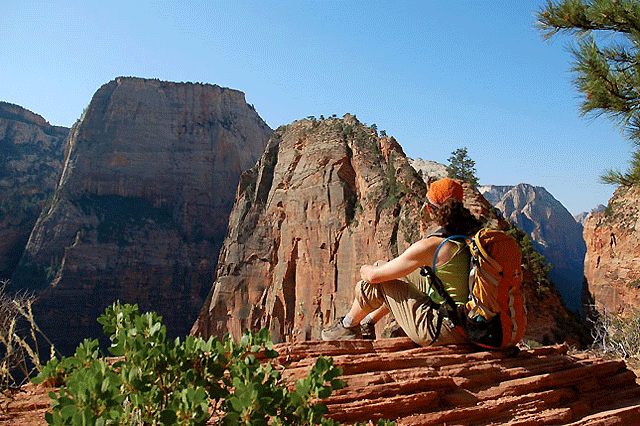
It’s remarkable the national park even created this nerve-rattling trail, which runs along a narrow rock fin with dizzying drop-offs on both sides. Rarely is such an intimidating, even terrifying path so frequented by hikers. But mounting this landmark seems to have assumed “I dare you” fame.
In my case, I only went up as far as Scout’s lookout. Beyond that, the path narrows as the ridge rises 1500 feet above the valley floor. To reach the bald, rocky crest known as The Landing, a section of chain provides a degree of comfort as you negotiate the exposed vertical-drop edges.
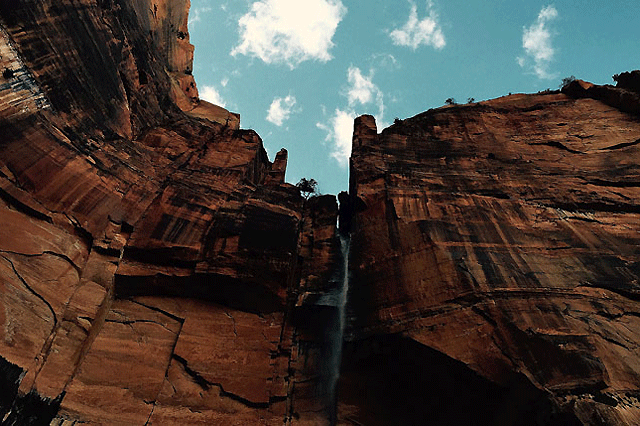
Unsurprisingly, it is not uncommon for hikers to slip and plummet to their deaths. Tread carefully! The full hike takes about five hours. But however you choose to savour Zion, it’s undeniably a sanctuary for the spirit. www.zionnationalpark.com


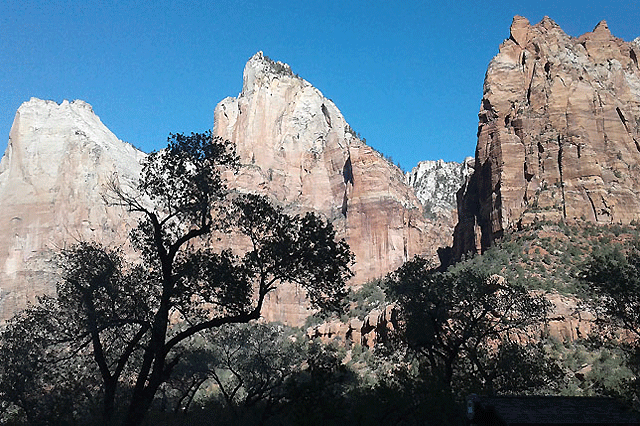




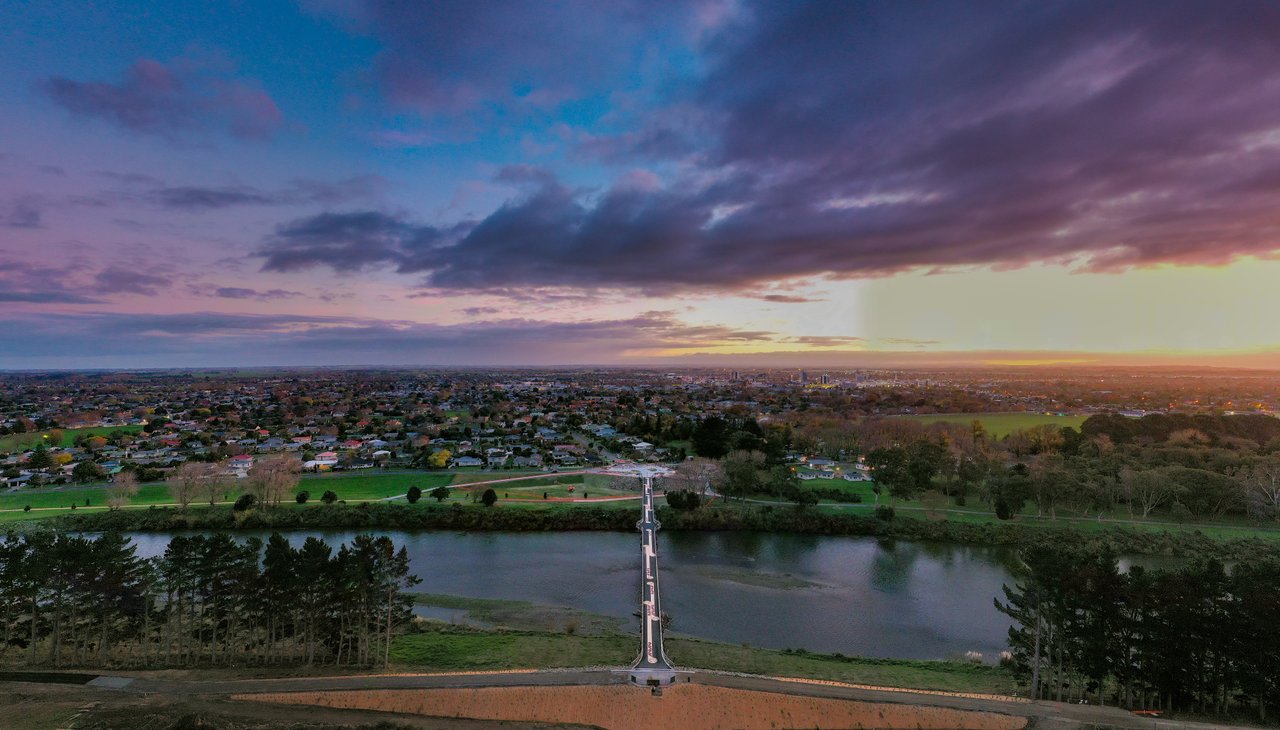


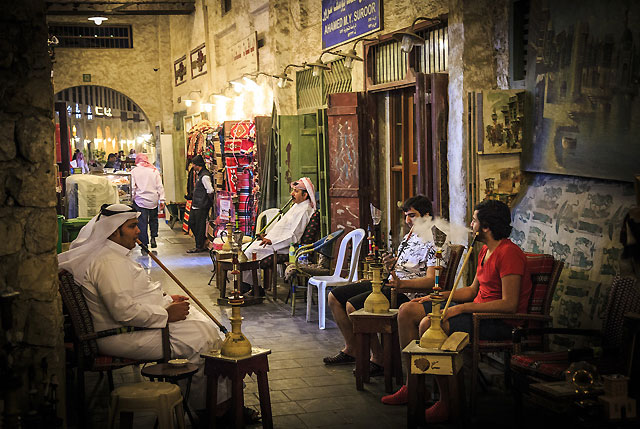


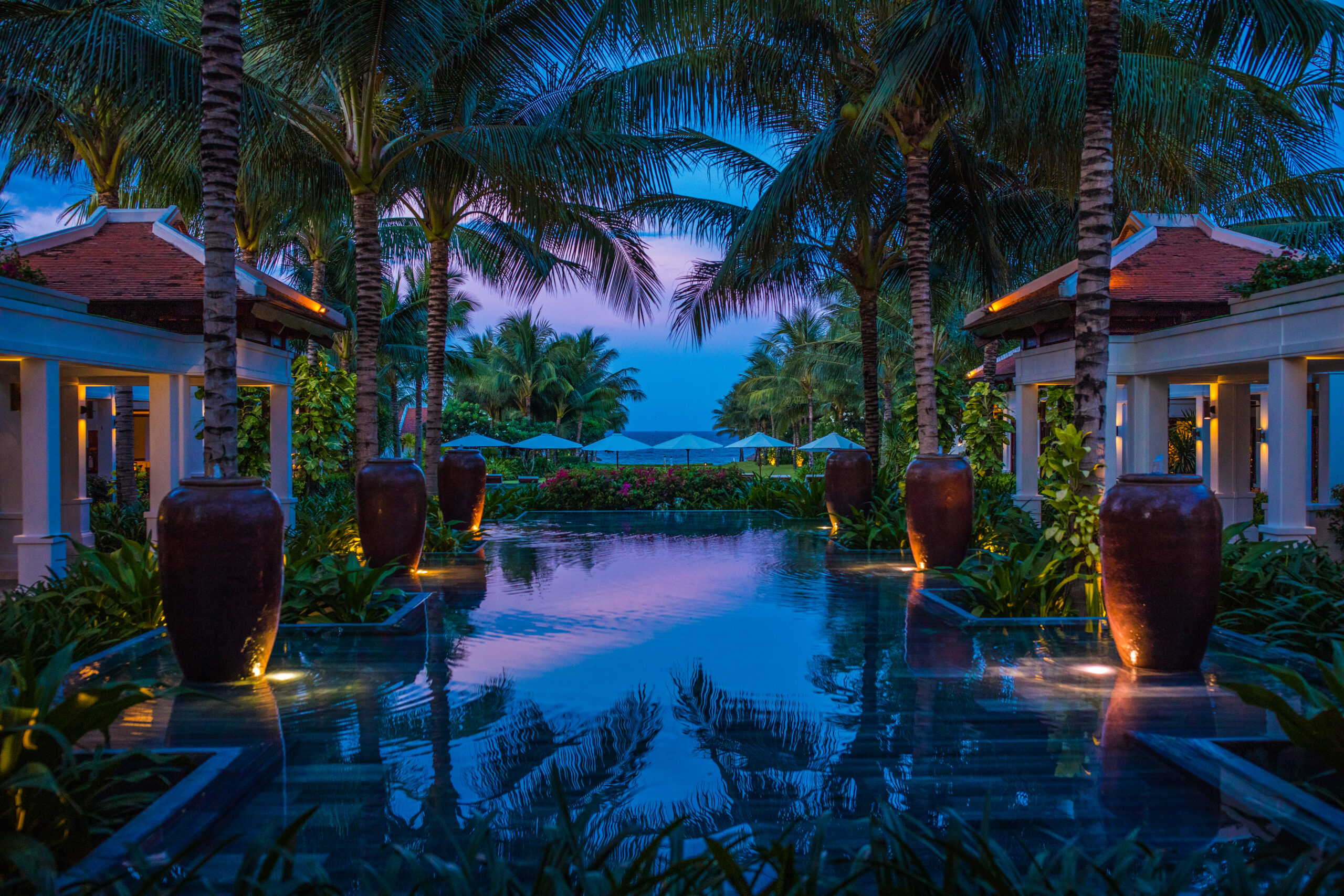

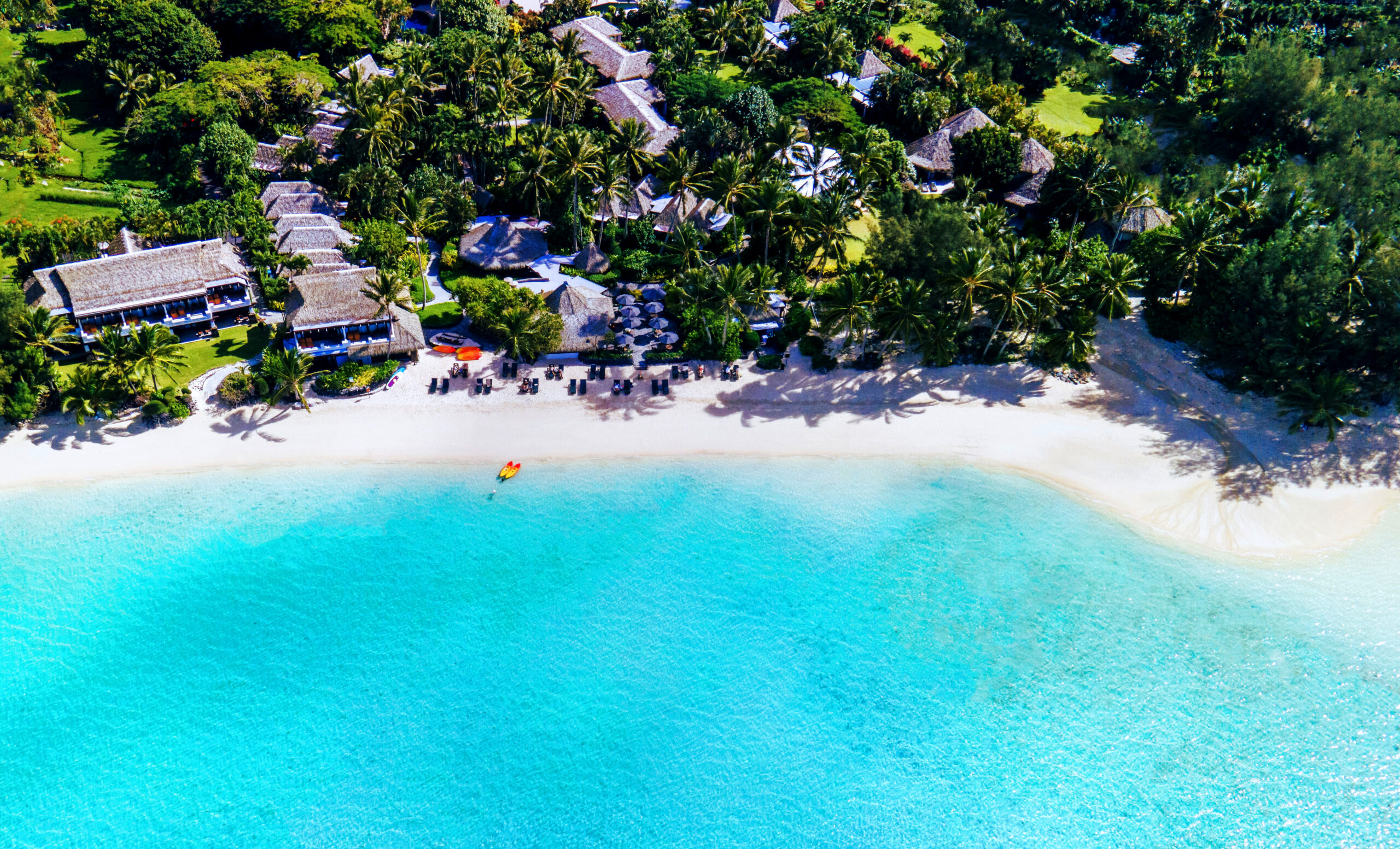
Recent Comments